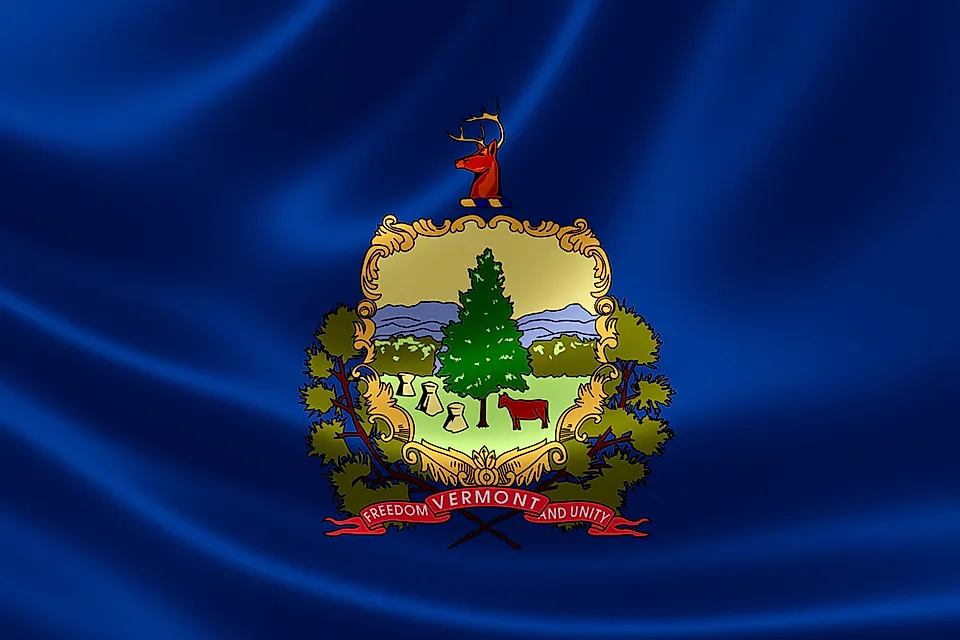Vermont State Flag

The flag of Vermont features the state coat of arms and motto on an azure (blue) field. The original flag of Vermont resembled the flag of the Green Mountain Boys, and was changed to resemble the United States flag once Vermont became a state. Vermont adopted its current flag on June 1, 1923, by the Vermont General Assembly.
Vermont's Coat of Arms
Most features on state's coat of arms originate from the state’s Great Seal of Vermont, which was created by Ira Allen. However, the Great Seal is produced in one color and used for authenticating and embossing numerous official documents, the coat of arms is a colorful and naturalistic representation of the seal. The coat of arms was first used on $5 Vermont banknotes in 1807. The coat of arms features a shield displaying a pastoral scene with some greenish mountains in the background, plus wheat sheaves on the forefront and a cow-pine branch, which extends around the shield.
Symbolism of the Vermont State Flag
The wheat sheaves and cow represent the agricultural and dairy industries, while the deer head symbolizes the state's wildlife. The pine tree represents the forests in Vermont, and the pine-needle supporter symbolizes the pine branches worn by the Vermont militia during the Plattsburgh battle in 1812. The motto ‘’Freedom and Unity’’ balances the ideas of the welfare of the common good and the freedom enjoyed by citizens.
First Flag of Vermont
Although there is no record of a design for a Vermont flag before 1804, the state's coat of arms was designed by Ira Allen in 1778. Although an official flag did not exist, the state used the flag of the Vermont militia, named the Green Mountain Boys, who were formed in 1770. This flag was used until 1804, when Vermont officially became a state.
Second Flag of Vermont
After becoming a state, Vermont changed its flag on May 1, 1804, to a version of the United States flag, but with 17 stripes and 17 stars, to reflect the new total number of states, with "Vermont" written on the top stripe. Vermont expected the national flag would also be changed in recognition of the 17 states, but this did not occur.
Third Flag of Vermont
Vermont changed its flag on October 20, 1837 to resemble the thirteen stripes of the United States flag, with the state coat of arms on the blue canton surrounded by a star. This new design resembled the national flag, the only difference being the number of stars on the canton. During the Spanish-American war, American Civil War and the First World War, the Vermont militia used a blue banner with the state coat of arm in the middle, which resembled the official Governor’s flag and their current flag.
Why Was Vermont's Flag Changed?
The second and third striped flags of Vermont resembled the national flag, which caused confusion. Therefore, in order to avoid confusion, the state adopted its Governor’s flag as the official Vermont flag on June 1, 1923.











